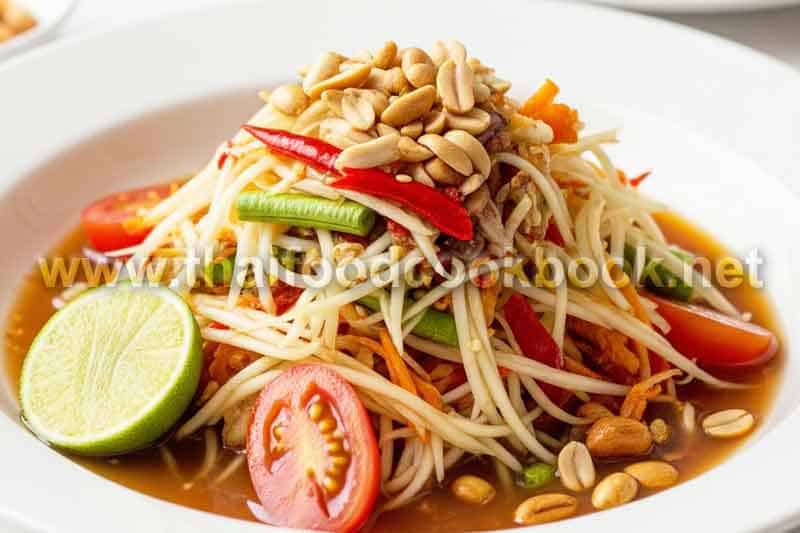Gluten‑Free Thai Dessert Recipe: Thai Black Sticky Rice with Coconut – A Traditional, Wholesome Treat Made Easy
People searching for authentic Thai desserts that are both healthy and gluten-free often struggle to find simple, trustworthy recipes that deliver rich flavors and traditional textures. One of the best choices for both taste and dietary needs is Thai Black Sticky Rice with Coconut. This gluten-free Thai dessert recipe combines chewy black sticky rice with creamy coconut milk, offering a satisfying, nutritious alternative to processed sweets. In this detailed guide, you’ll learn how to make this beloved dessert at home using natural ingredients, simple techniques, and tips that preserve its authentic Thai character—making it suitable for health-conscious dessert lovers everywhere.
What Makes Thai Black Sticky Rice with Coconut a Great Gluten-Free Thai Dessert
Thai Black Sticky Rice with Coconut, known locally as “Khao Neow Dam,” is a beloved dessert that highlights the naturally nutty flavor and deep color of black glutinous rice. This rice, despite its name, contains no gluten and is a staple in many Southeast Asian dishes. When paired with warm or chilled coconut cream, palm sugar, and a touch of salt, it creates a perfect balance of sweetness and richness.
This dish is highly regarded for being vegan-friendly, gluten-free, and packed with fiber and antioxidants. It’s an ideal option for those looking to enjoy healthy Thai coconut milk desserts without compromising on authenticity or flavor. Whether served warm for comfort or cold as a summer treat, this pudding never fails to delight.
Benefits of Choosing Gluten-Free Thai Desserts
- Safe for individuals with celiac disease or gluten sensitivity.
- Made with whole, plant-based ingredients that support digestive health.
- Free from dairy and artificial additives when prepared traditionally.
- Rich in essential nutrients like manganese, magnesium, and antioxidants.
Ingredients for Thai Black Sticky Rice with Coconut
These ingredients can be found in most Asian grocery stores or health food markets. Be sure to use high-quality rice and coconut milk for the best results:
Main Ingredients
- 1 cup black glutinous rice
- 2½ cups water (for cooking rice)
- ½ teaspoon salt
Coconut Topping
- 1 cup thick coconut milk
- ⅓ cup palm sugar (or coconut sugar)
- ¼ teaspoon salt
- 1 pandan leaf (optional, for aroma)
Optional Garnishes
- Toasted sesame seeds
- Fresh mango slices
- Roasted mung beans or shredded coconut
How to Make Thai Black Sticky Rice with Coconut – Step-by-Step Instructions
1. Prepare and Cook the Black Sticky Rice
- Rinse the black sticky rice thoroughly under cold water to remove starch.
- Soak the rice for 6–8 hours or overnight to reduce cooking time and enhance texture.
- Drain and transfer rice to a pot. Add 2½ cups water and ½ tsp salt. Bring to a boil.
- Reduce heat to low, cover, and simmer for 40–50 minutes until tender and water is absorbed.
- Remove from heat and let rest for 10 minutes.
2. Make the Sweet Coconut Sauce
- In a small saucepan, combine coconut milk, palm sugar, salt, and pandan leaf.
- Simmer over low heat, stirring until sugar dissolves. Do not boil.
- Remove pandan leaf before serving.
3. Assemble and Serve the Dessert
- Spoon the cooked black sticky rice into individual serving bowls.
- Pour the warm coconut sauce generously over the top.
- Garnish with toasted sesame seeds or fresh mango if desired.
Serving Ideas and Variations for Black Sticky Rice Coconut Dessert
Here are some creative ways to enjoy this versatile Thai dessert:
- Serve warm during cooler seasons for a comforting treat.
- Chill and serve with crushed ice for a summer-friendly version.
- Top with ripe mango slices or jackfruit for a fruity twist.
- Layer with coconut jelly for a dessert-in-a-cup presentation.
For more inspiration on similar traditional sweets, explore this Asian rice dessert guide.
Health Benefits of Thai Black Sticky Rice in Gluten-Free Desserts
Black sticky rice is not only visually striking but also nutritionally superior to white rice. It’s rich in antioxidants like anthocyanins, which are known to support heart health and fight inflammation. The high fiber content helps with digestion and contributes to prolonged satiety, making it ideal for those watching their diet.
Combined with coconut milk—which provides healthy saturated fats and minerals—this dessert becomes more than just a sweet treat. It supports energy levels, promotes healthy skin, and can be part of a balanced gluten-free diet.
Storage and Meal Prep Tips
- Store leftover rice and coconut sauce separately in airtight containers in the fridge for up to 3 days.
- Reheat the rice in the microwave or on the stove with a splash of water.
- The coconut sauce can also be reheated gently or served chilled depending on preference.
Conclusion: Make This Gluten-Free Thai Dessert at Home with Confidence
Thai Black Sticky Rice with Coconut is a wonderful gluten-free dessert that brings together flavor, health benefits, and cultural richness in one satisfying bowl. With its creamy coconut sauce and chewy, nutty rice, it’s a dish that appeals to both traditional Thai food lovers and those following dietary restrictions. This gluten-free Thai dessert recipe is easy to master, cost-effective, and incredibly rewarding. Try it today and discover a new favorite you can make again and again.

